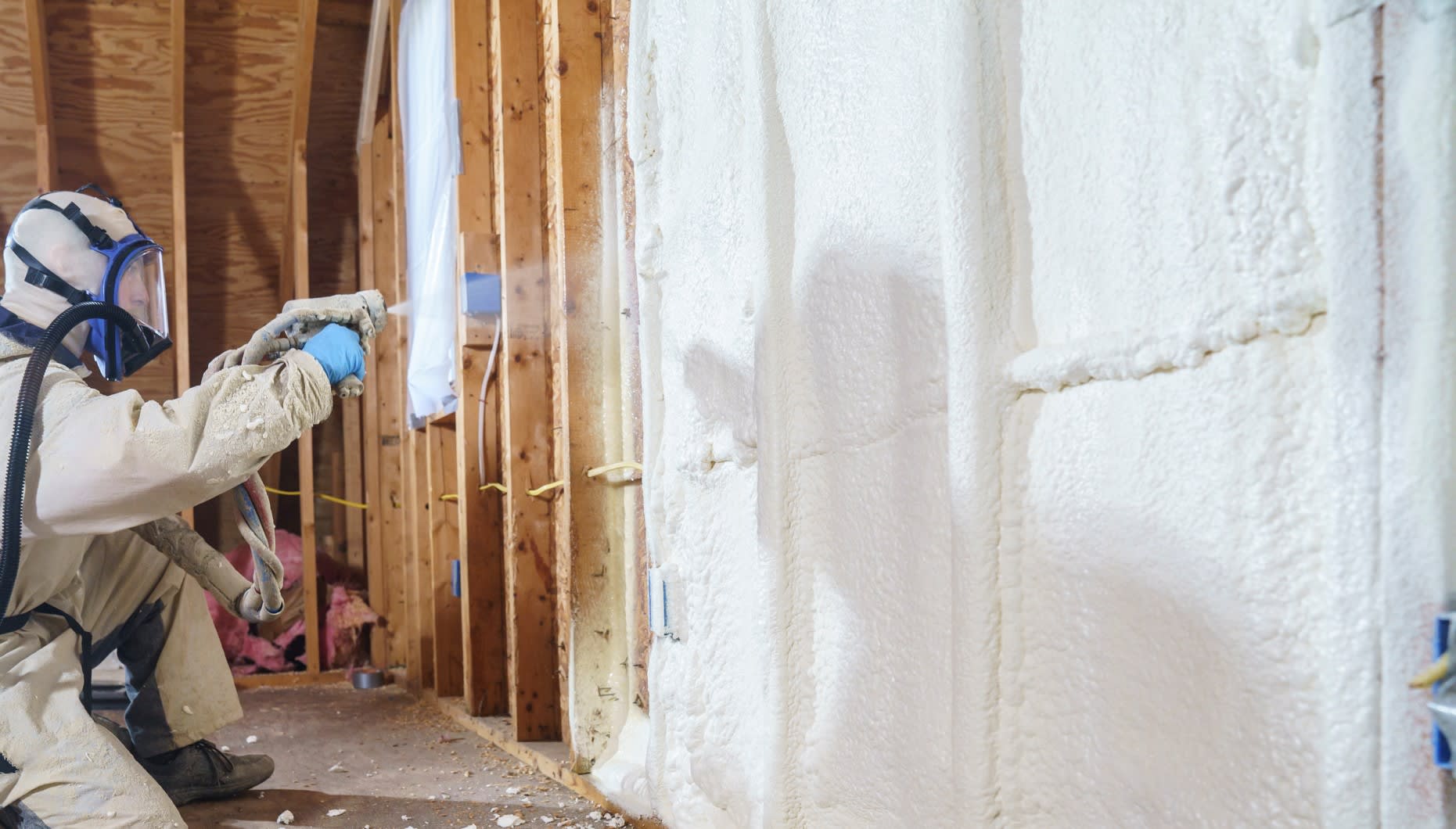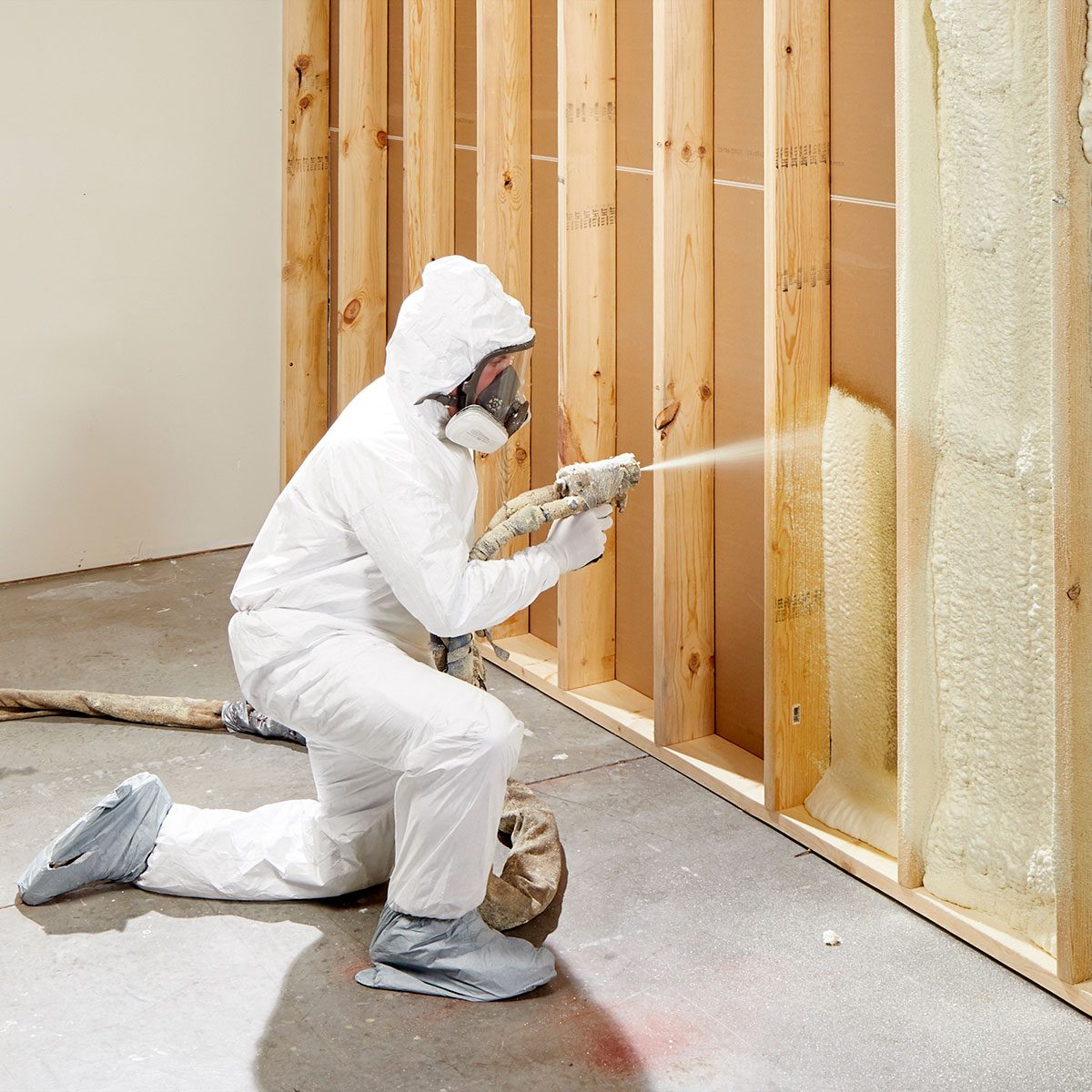Comparing Spray Foam to Traditional Insulation: Which Is Better?
Just How Spray Foam Can Enhance Energy Effectiveness in Any Building
Spray foam insulation has actually become an essential solution for improving power efficiency throughout numerous building types. By developing an airtight seal that lessens air leak, it effectively controls interior environments while considerably minimizing heating & cooling expenses. Its impressive R-value and moisture-resistant residential or commercial properties contribute to long-lasting power financial savings and boosted building longevity. As residential property proprietors significantly look for lasting remedies, the implications of spray foam insulation extend beyond mere utility savings. The complete extent of its advantages, nonetheless, warrants a more detailed examination of how it can transform energy management techniques in both domestic and industrial settings.
Understanding Spray Foam Insulation
Spray foam insulation is significantly identified for its remarkable thermal performance and versatility in different applications. Composed primarily of polyurethane, this insulation product is applied as a liquid that increases upon get in touch with, filling voids and producing a seamless obstacle. This distinct residential or commercial property permits spray foam to comply with irregular surface areas, making it a suitable option for both residential and business structures.

Application of spray foam insulation is normally performed by skilled specialists using specific tools, ensuring ideal efficiency and safety and security - Spray Foam. The curing process is quick, permitting for quick setup and very little disturbance. Consequently, spray foam insulation is increasingly being utilized in brand-new building and construction and retrofitting projects due to its capability to improve architectural honesty while boosting overall energy efficiency in buildings
Benefits of Energy Effectiveness
Power effectiveness plays an essential function in minimizing operational costs and reducing environmental impact throughout numerous markets. By maximizing power use, companies and property owners can achieve substantial financial savings on energy costs, which directly boosts economic performance. Efficient power intake indicates less dependence on fossil gas, consequently adding to a reduction in greenhouse gas exhausts and promoting a more lasting atmosphere.
Moreover, energy-efficient structures typically experience enhanced residential or commercial property worths. As energy costs climb and sustainability ends up being a priority for customers, homes with enhanced power efficiency attributes are a lot more appealing on the market. This fad motivates financial investment in energy-saving technologies, which can further drive technology and economic development.
Along with economic and environmental advantages, power effectiveness can additionally enhance the total comfort and wellness of indoor rooms. Appropriate insulation and reliable heating and cooling systems aid maintain constant temperature levels, decreasing drafts and moisture levels, which consequently can bring about better indoor air top quality.
Ultimately, the benefits of power performance extend beyond prompt savings, promoting a durable economic situation, promoting environmental stewardship, and improving the lifestyle for residents in any type of structure.
Just How Spray Foam Functions
Generally used as a fluid, spray foam increases rapidly upon contact with surfaces, forming a solid barrier that successfully secures cracks and spaces. This unique property is because of its chemical structure, mostly being composed of polyols and isocyanates, which respond when blended to create a foam that adheres and fills voids to various materials, including wood, metal, and concrete.
Once applied, the foam expands to numerous times its initial quantity, making certain a limited seal that stops air leak. This process considerably decreases thermal bridging, which takes place when warm transfers through materials, resulting in energy loss. The foam's high R-value, a measure of thermal resistance, adds to boosted insulation by decreasing warmth transfer between the interior and outside settings.
In addition, spray foam is resistant to moisture and parasites, better improving its efficacy in maintaining power effectiveness. Its application can be tailored to various areas, consisting of attic rooms, walls, and crawl rooms, enhancing insulation across a structure. Spray Foam. In general, the innovative layout and application technique of spray foam make it an effective option for improving power effectiveness in any framework, resulting in lowered energy prices and a much more sustainable constructed atmosphere

Applications in Numerous Buildings
Many applications of spray foam insulation can be located across numerous building types, improving power efficiency and convenience. In residential homes, spray foam is typically made use of in attics and walls to develop a seamless obstacle versus air leaks, substantially lowering heating and cooling demands. This application is specifically beneficial in older homes, where conventional insulation might be poor.
In commercial buildings, spray foam insulation is related to roofing systems and outside wall surfaces, which helps to improve thermal performance and safeguard versus moisture breach. Its light-weight nature makes it an ideal choice for retrofitting existing structures without adding considerable weight. Furthermore, spray see this page foam can be utilized in commercial setups to protect pipelines and storage space containers, keeping temperature level control for sensitive materials.
Institutional structures, such as hospitals and have a peek here schools, benefit from spray foam insulation by guaranteeing a consistent indoor climate that sustains owner convenience and wellness. The convenience of spray foam permits it to adjust to different building shapes and dimensions, making it a recommended selection for engineers and home builders looking for efficient insulation services. Overall, spray foam insulation acts as a critical part in accomplishing energy-efficient buildings across all fields.
Long-Term Price Cost Savings
Spray foam insulation provides significant lasting expense savings for structure owners and residents by reducing power usage and lowering energy bills. By providing a premium air seal, spray foam lessens the infiltration of outdoors air, thus boosting the thermal efficiency of a building. This leads to much more reliable heating and cooling down processes, which can lead to considerable reductions in power costs gradually.
In addition to prompt cost savings on energy bills, the longevity and durability of spray foam insulation add to its monetary advantages. Unlike conventional insulation products, which may droop, settle, or degrade, spray foam maintains its efficiency for decades, minimizing the demand for regular substitutes or repair work. This long life translates to reduce upkeep costs and less disturbance for occupants.
Additionally, buildings geared up with spray foam insulation usually delight in a boost in property value, making them a lot more enticing to potential buyers or renters. As power performance becomes increasingly prioritized, residential properties with reliable insulation solutions stand apart out there. Inevitably, the integration of spray foam insulation not only improves comfort but likewise represents a critical financial investment that yields considerable monetary advantages over the long term.
Verdict
To conclude, spray foam insulation acts as an important component in enhancing power effectiveness across diverse building kinds. Its ability to develop a smooth barrier versus air leakage, incorporated with high R-values and moisture-resistant properties, substantially lowers power usage and linked expenses. The implementation of spray foam not only contributes to constant indoor temperatures however also raises building worth, underscoring its duty as a sensible financial investment for both industrial and household residential or commercial properties.
Spray foam insulation has actually arised as a crucial option for improving energy effectiveness across various building kinds. Spray Foam. As an outcome, spray foam insulation is increasingly being used in brand-new building and construction and retrofitting jobs due to its ability to boost structural integrity while enhancing overall power effectiveness in buildings
Generally, the innovative layout and application technique of spray foam make it an efficient solution for enhancing energy effectiveness in any framework, leading to reduced power expenses and an extra sustainable constructed environment.
Many applications of spray foam insulation can over here be found throughout various structure types, improving power efficiency and convenience.In conclusion, spray foam insulation serves as a vital element in boosting energy effectiveness throughout diverse building kinds.